Home Tags Posts tagged with "sony"
sony
Sony has revealed a new edition of its virtual reality helmet Morpheus, which it says it plans to put on sale in 2016.
The new edition of Project Morpheus now features an OLED display, rather than an LCD one, letting it show more vibrant colors. That brings it in line with Facebook’s rival Oculus Rift.
The new virtual reality (VR) helmet is also capable of showing graphics at 120 frames per second (fps).
That beats the figure given by HTC for its recently unveiled Vive VR headset.
The frame rate is important as the higher the number, the smoother moving objects appear. It also reduces the risk of nausea.
HTC said on March 1 that its helmet provided a refresh rate of 90fps.
Oculus has not confirmed its specifications, but recent demonstrations of the recent Crescent Bay version of its kit have also been reported to run at 90fps.
Sony’s announcement is a surprise, because until now, the PlayStation console – which Morpheus depends on to play games – had not been thought to be able to render games at this rate.
However, speaking at the Game Developers Conference (GDC) in San Francisco, PlayStation executive Shuhei Yoshida revealed that a software update would allow the machine to create an “in-between frame” to double its current maximum of 60fps.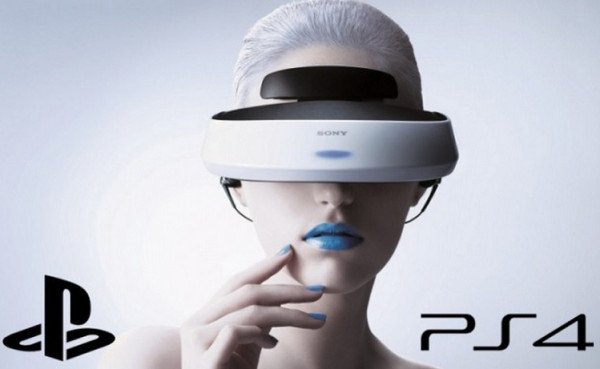
“Higher frame rates are definitely important because they are going to translate into higher responsiveness of the gaming environment,” explained Brian Blau, an analyst at the Gartner tech consultancy who previously worked in the virtual reality industry.
“That’s going to mean people who are wearing the device aren’t going to feel as sick. 120fps approaches the range where you don’t notice the changes in the graphics – they will be smooth and fluid.”
Other details revealed at GDC include:
- Morpheus now has a 0.018 second latency rate – the gap in time between the user moving their head and the headset responding. It was previously 0.04 seconds. Shuhei Yoshida suggested this meant the lag had now become imperceptible
- The headset’s screen is now 5.7in – up from 5in before – and provides a 100-degree field of view, which should cover most of what the user sees
- The number of LEDs used to track head movement has been increased from six to nine. Sony says this will improve the stability of the 360-degree tracking provided by its separate PS4 camera
- A quick-release button has been added to make it easier for users to remove the headset
The screen resolution remains at 1080p high definition, providing 960 pixels by 1080 pixels per eye.
Shushei Yoshida said the current version was “near final”, suggesting there were further improvements to be made before it goes on sale, which is scheduled to happen within the first six months of 2016.
He added that more details would be unveiled at the E3 video games expo in June.
The release date is later than that of HTC’s Vive headset – a collaboration with video games publisher Valve – that is set to launch before the end of this year.
HTC’s kit is expected to be designed for games sold via Steam’s PC-focused Steam online marketplace, meaning it may not directly compete with Sony’s machine. PCs can generate higher quality moving images than the PS4 if fitted with special graphics cards.
Valve also released more details about how its VR system would work.
It said a tracking-system called Lighthouse would let users explore a virtual space and the objects within it from different angles by moving about in real life.
“In order to have a high quality VR experience, you need high-resolution, high-speed tracking,” said Valve’s Alan Yates in a statement released by HTC.
“Lighthouse gives us the ability to do this for an arbitrary number of targets at a low enough bill-of-materials cost that it can be incorporated into TVs, monitors, headsets, input devices, or mobile devices.”
HTC said it would allow manufacturers to build Lighthouse into their products without charging them a fee.
It also announced the Source 2 games engine – software used to create video games with 3D graphics – which it is making available to third-party developers.
The original version, which is 10 years old, was used to make games including Half-life 2, Portal and Titanfall.
Valve may provide more details about its VR platform later this week when selected GDC attendees will be among the first to try out the HTC Vive.
Oculus has yet to set a release date for its PC-connected virtual reality helmet.
However, Samsung already sells Oculus-branded VR kit that uses its smartphones as screens.
“I think 2015 and 2016 are going to be seminal years for VR,” said Sony’s Brian Blau.
“There’s a lot of products coming to market, which is going to mean consumers get to experience it in a way they haven’t been able to do before: at home and in high quality.
“Here at GDC, there are a lot of developers who are interested in VR.
“But the big issue is, will the helmets be affordable or expensive. The early adopters will probably pick one up and pay whatever price is asked, but a higher price will limit sales for mainstream gamers.”
[youtube _aqFh2cppr8 650]
Xbox and PlayStation online services have been disabled after being attacked by hackers.
Microsoft and Sony – the companies which make the games consoles – have told customers they are aware of issues affecting their online services.
A hacking group called Lizard Squad is claiming to have caused the problems.
Microsoft and Sony have not commented on the claim, but both said they were fixing the issues.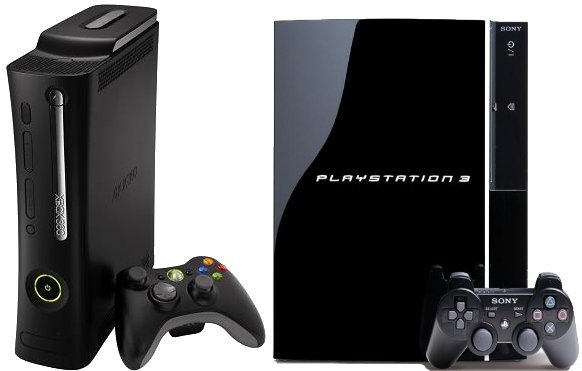
Last night, PlayStation’s official Twitter account posted: “We are still looking into the PSN (PlayStation Network) issues reported earlier. Thanks again for your continued patience today.”
A message on Xbox’s website says: “Hi Xbox members. Are you having a rough time signing in to Xbox Live? We’re working to get this figured out right away.
“Keep trying to sign in when you get a chance. We’re grateful for your patience, and we’ll be sure to loop you in on our progress in 30 minutes.”
[youtube u2NPwff8CWY 650]
PlayStation network has been shut down after cyber-attackers overloaded it in what’s known as a distributed denial of service attack.
Sony said in a blog post that no personal information had been accessed.
On August 24, an American Airlines flight carrying a senior Sony executive was also diverted following a bomb scare.
The group claiming responsibility for closing down the network also tweeted suggesting there was a security threat to the flight.
Sony also said that “the PlayStation Network and Sony Entertainment Network have been impacted by an attempt to overwhelm our network with artificially high traffic”.

PlayStation network has been shut down after cyber-attackers overloaded it in what’s known as a distributed denial of service attack
“We will continue to work towards fixing this issue and hope to have our services up and running as soon as possible,” the blog said.
Sony has said the FBI is investigating the security scare over the flight carrying Sony Online Entertainment President John Smedley, which should have landed in San Diego but was diverted to Phoenix, Arizona.
John Smedley tweeted: “Yes. My plane was diverted. Not going to discuss more than that. Justice will find these guys.”
Sony’s 52 million strong PlayStation network has been hit by hacking attacks before, including a security breach in 2011.
Sony had already scheduled routine maintenance work to be done on its PlayStation network on August 25.
Some services including PlayStation Store, PSN account management and registration, entertainment services and online gameplay will be unavailable.
Sony has signed a partnership with China’s Shanghai Oriental Pearl to manufacture and sell its PlayStation consoles on the mainland.
The deal, formed as two joint ventures with Shanghai Oriental Pearl, gives Sony access to an estimated 500 million gamers in China.
China has had a ban on gaming consoles since 2000, citing their adverse effect on the mental health of young people.
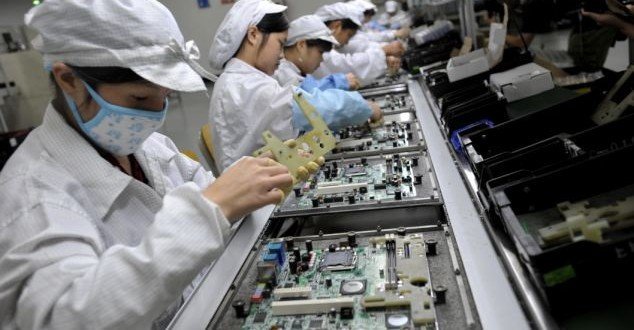
Sony has signed a partnership with China’s Shanghai Oriental Pearl to manufacture and sell its PlayStation consoles on the mainland
In January, the Chinese government said it will allow foreign firms to manufacture and sell consoles.
China’s gaming market, which is currently dominated by PC, mobile and online games, is seen as a key growth area for console makers.
The two partnerships are both with Shanghai Oriental Pearl, one gives Sony a 70% share and the other a 49% stake and both will operate out of Shanghai’s free trade zone.
In a statement to the Shanghai Stock Exchange, an executive from Shanghai Oriental Pearl says: “The joint venture will be based on the relevant state policies and will introduce quality and healthy video games that will adhere to China’s national conditions as well as the tastes of Chinese gamers.
“Sony will also co-operate with domestic game development teams to promote original products on PlayStation platform, while further improving the Chinese gaming industry.”
Last week Sony said it aimed to nearly triple operating profits by next year.
Sony’s game console join venture comes nearly one month after rival Microsoft said its Xbox One game console will go on sale in China in September.
Sony has filed a patent application for SmartWig, as tech companies jostle for the lead in the wearable technology sector.
The company says the SmartWig can be worn “in addition to natural hair”, and will be able to process data and communicate wirelessly with other external devices.
According to the filing, the SmartWig can help navigate roads and collect information such as blood pressure.
Google and Samsung are among the companies that have launched products in wearable technology – seen as a key growth area.
Sony said the wig could be made from horse hair, human hair, wool, feathers, yak hair, buffalo hair or any kind of synthetic material.
At the same time, the communication interface and sensors placed in the wig are at least partly covered by parts of the wig in order to be hidden from sight during use.
It said that as a result, the device has the potential to become “very popular” as it could be used as a “technically intelligent item and fashion item at the same time”.
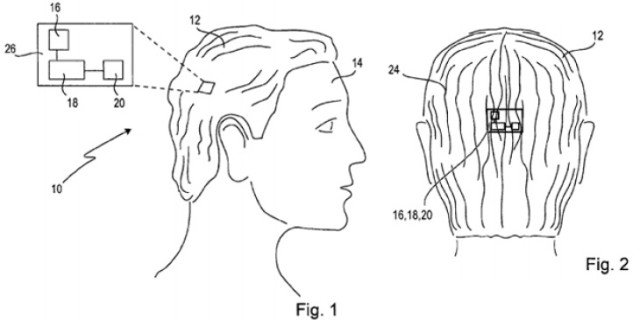
Sony has filed a patent application for SmartWig
“The usage of a wig has several advantages that, compared to known wearable computing devices, include a significantly increased user comfort and an improved handling of the wearable computing device.”
Sony listed various potential uses of the SmartWig in its filing, including helping blind people navigate roads.
It said that a small video camera or a sensor on the wig could help to provide the position and the location of the wearer.
A remote user can then use the images provided and send vibration commands through the network and navigate the wig user manually to a desired destination.
“Although navigation systems based on vibration motors have been widely introduced, a navigation system integrated into a wig… is so far not known,” Sony said.
A further potential improvement of the wig may use ultrasound waves to detect objects around a user.
Sony said the gaming industry or “any type of virtual reality appliance” could also be an “interesting field” of use for the device, though it did not provide any details.
It could also have uses in the healthcare sector, as a combination of sensors can help collect information such as temperature, pulse and blood pressure of the wearer.
“The system can detect these kinds of data naturally and transmit them to the server computer,” it said.
SmartWig can also be used during presentations where a wearer can “move to the next presentation slide or back to the preceding presentation slide by simply raising his/her eyebrows”.
[youtube MtrZIo2X5r4 650]
Sony has slashed its full-year profit forecast by 40 percent as it continues to struggle.
The Japanese electronics giant now expects to make a net profit of 30 billion yen ($305 million) in the financial year to March 31, 2014, down from its earlier projection of 50 billion yen.
The cut came as Sony said its loss in the July-to-September quarter widened 25 percent from a year ago to 19.3 billion yen.
One of the big drags on its earnings was its Pictures division which made a loss due to some high profile flops.
The division, which also includes production of movies as well as TV shows, recorded an operating loss of 17.8 billion yen during the period, compared to an operating profit of 7.9 billion a year earlier.
“The current quarter reflects the theatrical underperformance of White House Down, while the previous fiscal year included the strong theatrical performance of the Amazing Spider-Man,” Sony said in a statement.
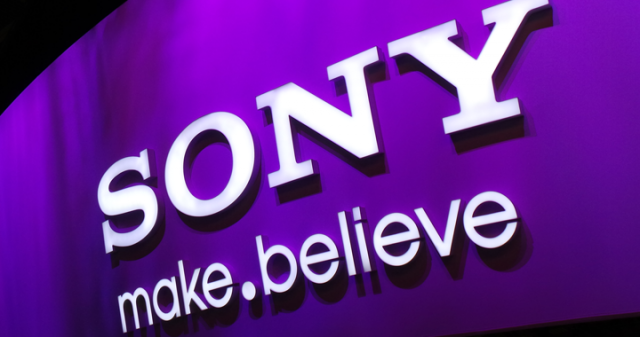
Sony has slashed its full-year profit forecast by 40 percent as it continues to struggle
There was also a decline in television licensing revenue due to fewer movies being licensed year-on-year.
Sony has also been hurt by increased competition and slowing global demand for TVs.
A decline in TV prices has further hurt the profitability of the sector.
Sony’s TV division posted an operating loss of 9.3 billion yen for the three months to the end of September.
At the same time, its gaming division which makes the PlayStation consoles also reported an operating loss during the period.
The firm said that the division’s earnings were hurt after it cut the price of its PlayStation Vita consoles.
Sony cut the prices of the original PS Vita earlier this year in a bid to boost sales, which have been affected by an increasing number of users playing games on their smartphones and tablet PCs.
Sony’s Game division made an operating loss of 800 million yen during the period, compared to an operating profit of 2.3 billion yen during the same quarter a last year.
Sony’s results are in contrast to rivals Sharp and Panasonic who reported profits for the July-to-September quarter.
Sony has launched Xperia Z Ultra waterproof Android smartphone with a 6.4 in screen (16.3 cm).
Sony is pitching the Xperia Z Ultra as being the slimmest large-screened handset on the market.
The Xperia Z Ultra can also accept sketches or notes written using a standard pencil or metal-tipped pen in addition to an optional stylus.
Sony says it intends for the device to challenge Samsung’s dominance of the jumbo-sized handset sector.
According to a study by consultants Transparency Market Research, Samsung accounted for 70% of the overall “superphone and phablet” market in 2012 thanks to the popularity of models including the Galaxy S3 and Galaxy Note 2.
Earlier this year, it added the Galaxy S4 and Galaxy Mega – a 6.3 in-screened handset – to its line-up.
Sony already offers a 5 in handset of its own, the original Xperia Z, which it unveiled in January.
The Ultra follow-up was unveiled at the Mobile Asia Expo in Shanghai. The new device will go on sale in China, Indonesia and Singapore in July and then in Europe in September.
“Southeast Asia is the key market for the product because the trend towards large-screened smartphone devices is stronger there,” said Calum MacDougall, director of Xperia marketing.
“But we also see the trend in Europe as well.
“In the large-screen segment at the moment most consumers are looking at the Galaxy Note. Now we can offer something that is really distinct: a stronger screen, greater portability, waterproofing and something different around the stylus and the pen.”

Sony has launched Xperia Z Ultra waterproof Android smartphone with a 6.4 in screen
Sony is not alone in seeking to erode Samsung’s lead.
Over recent months Huawei has announced the 6.1in Ascend Mate; ZTE the 5.7 in Grand Memo; Acer the 5.7 in Liquid S1; Asus the 6 in FonePad Note; and Lenovo the 5.5 in Ideaphone K900.
Calum MacDougall said Sony intended to compete against these by promoting the Xperia Z Ultra’s “premium” features rather than trying to match or undercut the Chinese and Taiwanese firms’ prices.
Sony reported its first annual profit in five years in May, but some analysts said its figures were skewed by asset sales and did not reflect a turnaround for its electronics divisions.
The Xperia Z Ultra is 6.5 mm (0.26 in) thick – only slightly deeper than the thinnest device on the market, Huawei’s Ascend P6.
Unlike the original Xperia Z the new phone does not need a flap over its headphone socket to protect it from water damage, addressing complaints the feature was fiddly to use.
It can also be submerged to a deeper limit – 1.5 m (4.9 ft) in freshwater for up to half an hour.
The device also features:
- A 1080p resolution screen with in-built software to upgrade lower definition videos and photos
- 16 gigabytes of internal storage with support for 64 GB microSD cards
- An 8 megapixel rear camera
- A battery offering up to 11 hours talk time or 120 hours of audio playback – a figure which Sony claims is a record
Those concerned about using such a big device for quick tasks are also offered an optional bluetooth add-on which can be paired to the handset using NFC (near field communication) to make calls, view text messages or stream music.
The accessory is similar to the HTC’s Mini accessory announced in January for its 5 in Butterfly handset.
Transparency Market Research said that over 150 million Android super-sized phones were sold in 2012 and predicted the market would grow to 400 million by 2018.
Another consultancy firm, Frost & Sullivan, agrees that demand for such devices appears to be robust despite the fact many users would struggle to use them unless they had both hands free.
“For many people in developing parts the phablet is their first communications and computing device and allows them to have a single machine rather than multiple ones,” said the firm’s managing director Manoj Menon.
“But going forward companies are going to find it increasingly hard to differentiate between their products on size – it will have to be on software and other features. So, Sony seems to have the right strategy at this time.”
[youtube h45uTBGftkQ]
PlayStation 4, Sony next-generation gaming console, has been announced at an event in New York.
PlayStation 4 (PS4) new hardware is designed to offer superior graphics as well as new social features including the sharing of recorded gameplay clips.
The new console will succeed the PlayStation 3, which went on sale in 2006 and has sold about 75 million units.
The PS4 will eventually compete against Microsoft’s still-to-be-unveiled Xbox 360 successor and Nintendo’s Wii U.
Sony also confirmed a range of big-name software for the machine including Bungie’s upcoming “shared-world shooter” Destiny, which will include exclusive content for the PS4.
The developer’s previous title, Halo, helped drive sales for the rival Xbox platform.
A successful launch might spur on sales of Sony’s new televisions and other consumer electronics, helping turn around its fortunes.
Sony posted a 456.7 billion yen loss ($4.9 billion) in its last financial year, marking the fourth year it ended in deficit.
But the firm has forecast a 20 billion yen profit for the current financial year ending in March.
Sony said the console was “coming holiday 2013” suggesting it will go on sale in at least some countries in or around December.
It did not give any indication of its price nor did it show what the console would look like.
There was also no mention of whether the console would support 4K – or ultra-high definition – video.
Sony described the machine as being like a “supercharged” PC.
It runs off an x86-based CPU (central processing unit) – similar architecture to that found in most desktop computers – and an “enhanced” PC GPU (graphics processing unit). Both CPU and GPU are designed by the US firm Advanced Micro Devices (AMD).
It comes with the new DualShock 4 controller, which includes a touchpad, a “share button” and a lightbar, which allows a separate camera to track its movement.
“This is a complete controller upgrade with touch, share and better responsiveness,” said Brian Blau, an analyst at the tech consultancy Gartner.
“The new controller is the key to a better PS4 experience. It has the ability to share content easily, and brings in a component of touch that allows even more ways to interact with games.”
The console also includes new hardware dedicated to video compression to make it a more social device.

PlayStation 4, Sony next-generation gaming console, has been announced at an event in New York
Users will be able to pause a game, select a few minutes of recorded video of their most recent activity, and instruct the clip to be uploaded to a social network.
This will then occur in the background while they can return to their game. The firm said it wanted to make sharing video clips as common as it is today to share screenshots.
Another new feature is that gamers can let one of their friends connect to their machine and take control of their character to help if they have got stuck, or allow several friends to watch their live progress as spectators. This facility uses technology from Gaikai – a cloud-based service Sony acquired last year for $380 million.
Gaikai’s technology is also being used to allow PS4 games to be streamed and played via the PlayStation Vita handheld console, which may boost its sales.
Sony said it was also exploring the possibility of using its Gaikai unit to allow PlayStation 3 games to be played on the new machine as well as other devices.
However, at the moment PS3 games will not run on the new console.
Sony invited developers on stage to preview some of the PS4 games being worked on.
They included Killzone Shadowfall – an addition to its bestselling Killzone science fiction first-person shooter series; the racing game Driveclub; superhero game Infamous: Second Son; and Diablo 3.
Developer Ubisoft also confirmed that its much-discussed title WatchDogs, which involves a hacker taking control of a smart city’s systems, is indeed being developed for the PS4.
Jim Ryan, president of Sony Computer Entertainment Europe, said his firm’s shift to an x86-based processor would make it easier for other developers to create games for the platform.
“One of the fundamental design principles was to make the PlayStation 4 considerably easier to develop for than some of its predecessor platforms,” he said.
“It is much more of a generic PC environment. It’s not a bespoke development environment as was very much the case with the PlayStation 3.
“So it’s something developers are aware of, are comfortable with and they don’t have to relearn the rules.”
While the graphics shown during the demonstrations were more advanced that those in current games for Nintendo’s Wii U, Sony must also convince gamers to choose its platform over PC-based systems.
PCs will be capable of offering increasingly impressive visuals as the PS4 ages thanks to their ability to have their processors and other hardware upgraded.
US firm Valve, in particular, has been vocal about its ambition to bring PC-based gaming to living room TVs.
Sony did not announce how much it plans to charge – perhaps holding the news back for the E3 gaming conference in Los Angeles in June or a later announcement.
The PlayStation 3 was initially sold at a loss, so if that practice is repeated with the new model its launch may initially put fresh strain on the firm’s finances.
Even so, one analyst suggested that Sony would be willing to take the pain to maximize early demand.
“Without the established user base and community of PS3 and PlayStation Network, Sony would be without a significant home entertainment foothold allowing it to connect many of its other consumer electronic devices, products and services,” said Piers Harding-Rolls, head of games at IHS Screen Digest.
“Sony’s next generation device is likely to take on more importance not less.”
The Japanese firm’s shares closed 1.8% lower in Tokyo trade following the announcement.
[youtube x7QhUL8NUK4]
Google and Sony have announced a tie-up that will see Google’s interactive TV service made available outside the US for the first time.
The set-top box allows users to browse the internet through their television, as well as access a range of specially designed applications.
The device, which will cost around £200 ($320) when it is released in July, will compete with Apple’s own TV box.
Apple TV is already available in the UK, currently priced at £99 ($155).
In a press release, Sony said their Google TV product, the NSZ-GS7, will also soon be made available in Canada, Australia, France, Germany, the Netherlands, Brazil and Mexico.
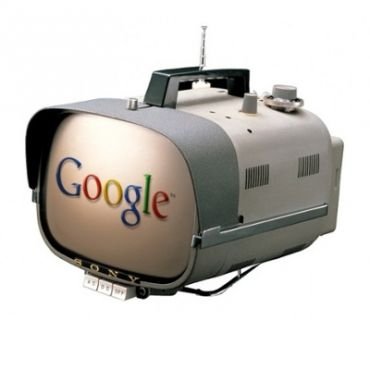
Google and Sony have announced a tie-up that will see Google's interactive TV service made available outside the US for the first time
“Entertainment content is available through so many channels and sites, and Google TV helps consumers easily find what they want to watch, listen to or play with the freedom of the internet and using the familiar Chrome search engine technology,” said Gildas Pelliet, Sony’s European head of marketing.
The device will be followed with a Blu-ray version expected to cost around £300 ($480) when it is launched later in the year.
The box will be controlled by a dual-sided remote control with a full QWERTY keyboard.
Like Apple’s offering, Google TV can be controlled via a smartphone.
Google’s foray into television has faced some hiccups since it first launched Google TV in the US in 2010.
Its devices were criticized for being too expensive, and several TV networks blocked the US-only service from accessing their web content.









